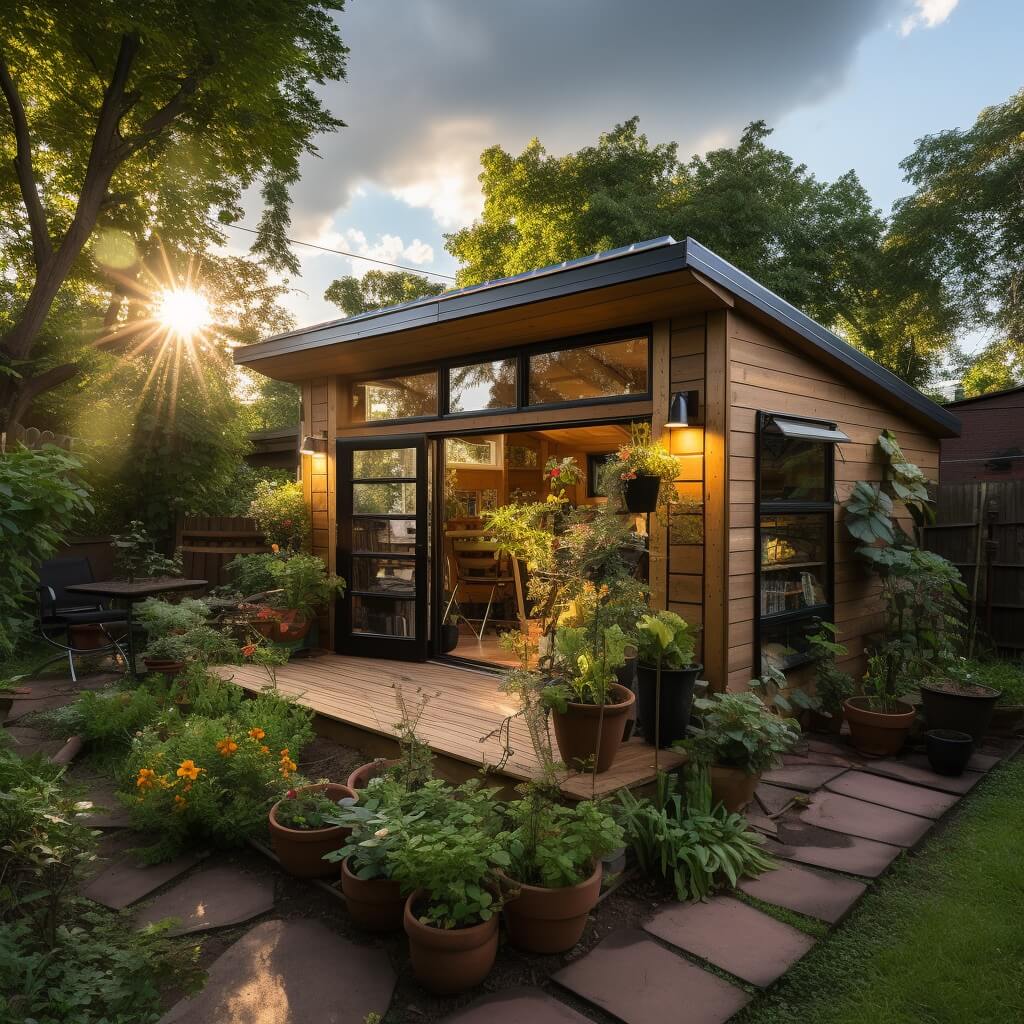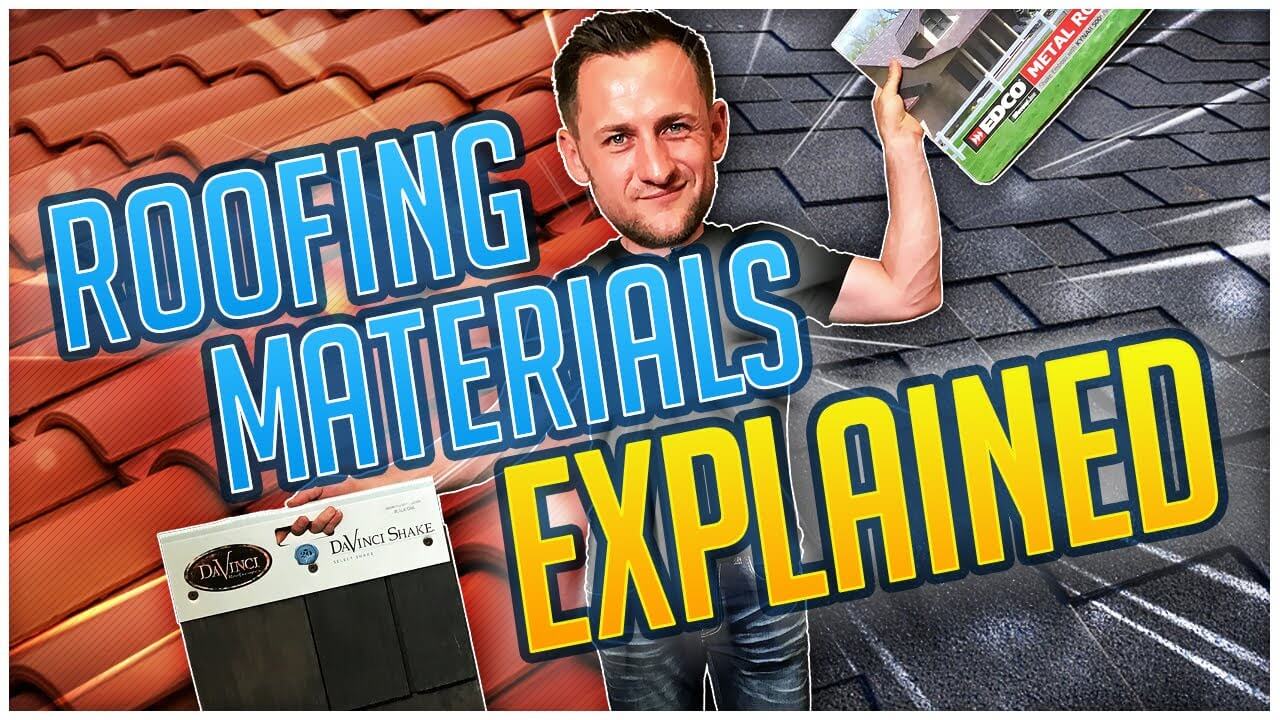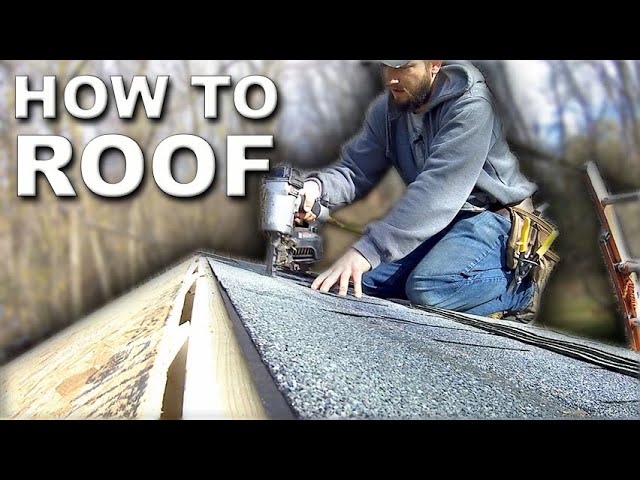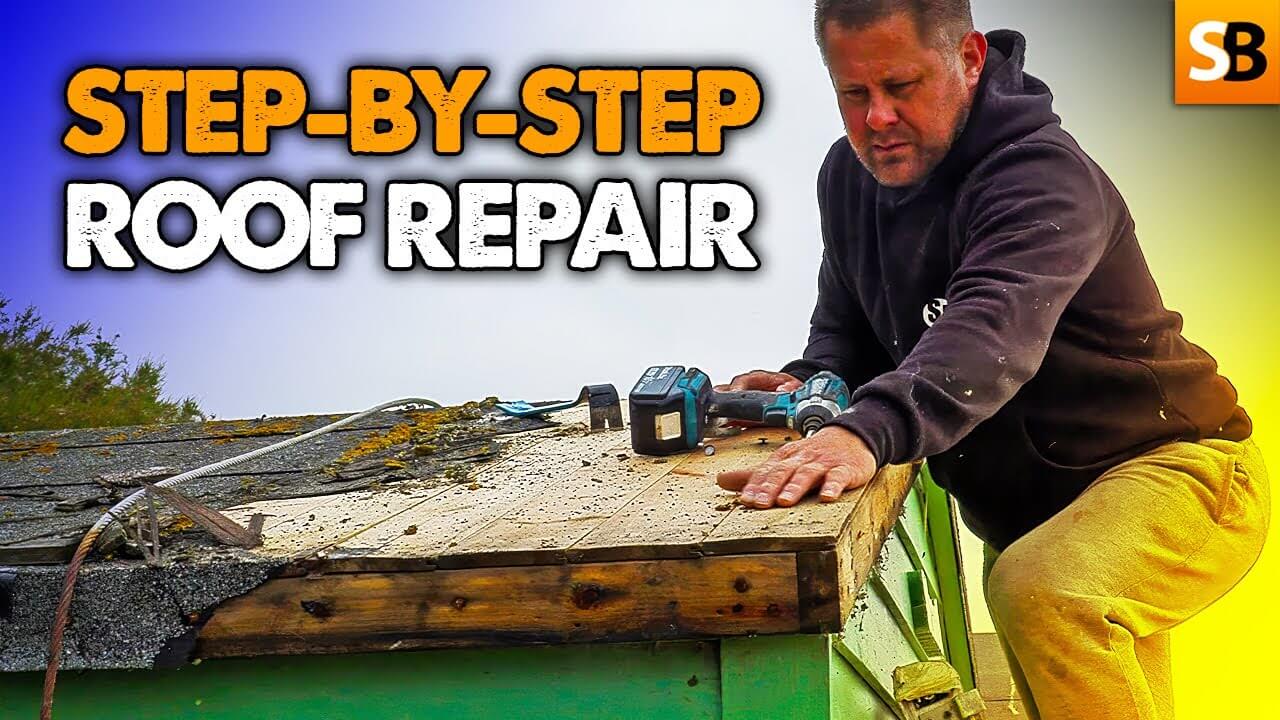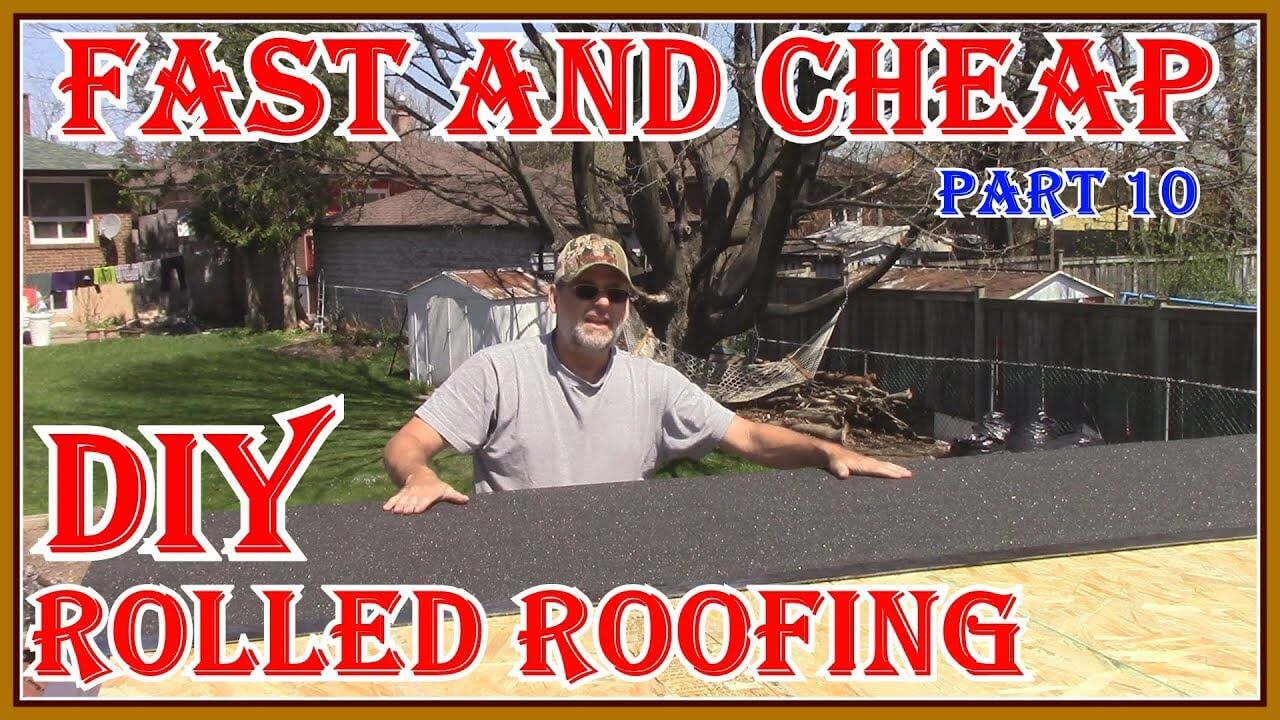Best Shed Roofing Materials for Your Garden Shed
As a seasoned contractor, I’ve learned that the best shed roofing materials are those that balance durability, cost, and ease of installation.
Navigating through the myriad of options can be daunting, but in short, the top choices often include asphalt shingles, metal roofing, wooden shingles, and even corrugated plastic, each offering unique benefits. The choice ultimately depends on your specific needs, considering factors such as climate, purpose, and budget.
Remember, the longevity of your shed roof hinges not only on the material chosen but also on proper surface preparation and regular maintenance. Let’s dive deeper into each of these materials to help you make an informed decision for your shed.
Short Summary
Top Shed Roofing Materials to Consider
Selecting the right shed roofing material for your garden shed project can significantly impact the durability and functionality of your shed. Some popular shed roofing materials include asphalt shingles, metal roofing, cedar shingles, rubber shingles, corrugated roofing panels, polycarbonate roofing panels, EPDM rubber roofing membrane, clay tile roof and tiles, and slate roofing.
Each material comes with its unique set of advantages and disadvantages, and understanding these can help you make an informed decision based on your specific requirements.
In this section, we will delve into the details of each of these shed roofing materials, discussing their benefits, drawbacks, and installation complexity. By the end of this section, you will have a comprehensive understanding of the different roofing materials and be able to determine which one is the best fit for your wooden shed.
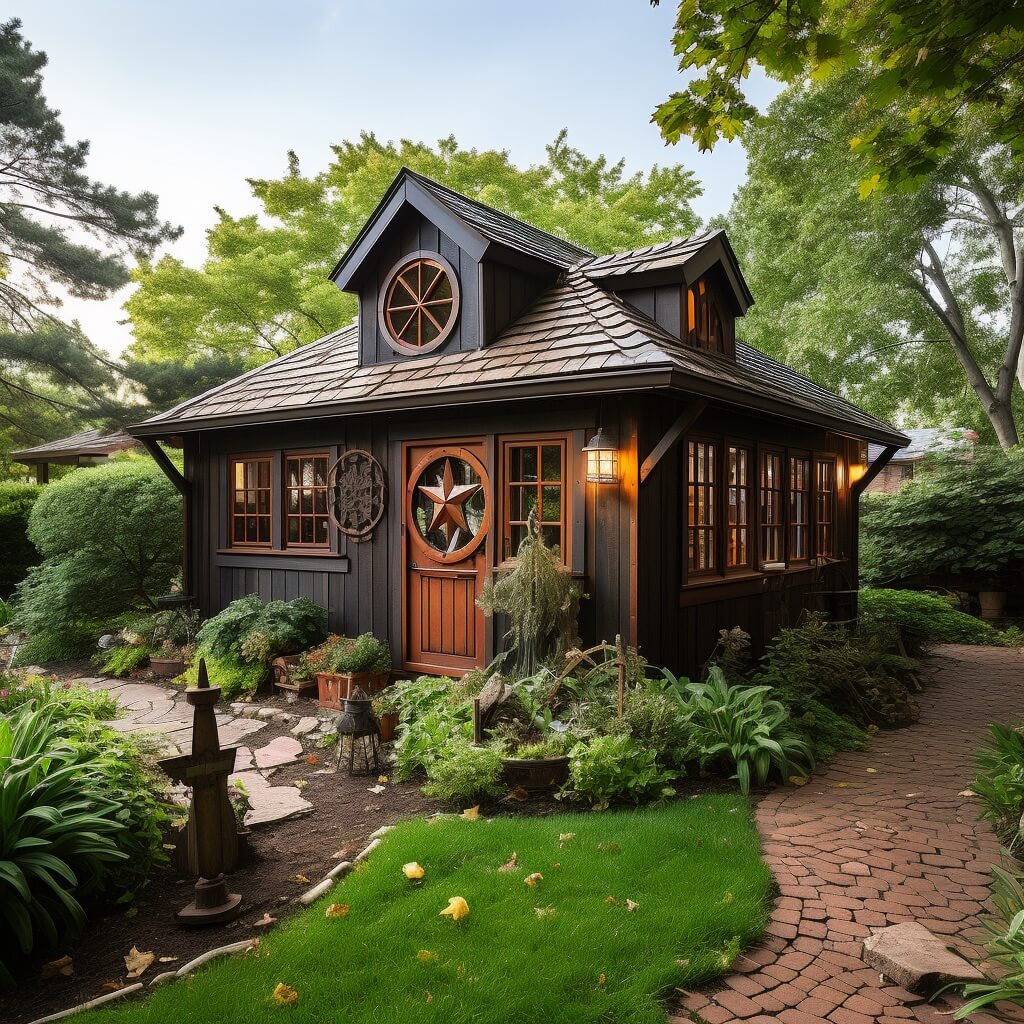
Asphalt Shingles
Asphalt shingles are the most commonly used shed roofing material due to their affordability and ease of installation. Architectural and 3-tab shingles are the two general forms of asphalt shingles. They have distinct differences in style and design.
Architectural shingles are thicker and have a longer lifespan, typically with a 30-year or even limited lifetime warranty, while 3-tab shingles usually have a 20 to 30-year warranty. However, it is not recommended to install shingle roofs on flat roofs.
The average cost of asphalt shingles varies depending on the type, with 3-tab shingles costing around $100 per 100 square feet, and architectural shingles averaging $150 per 100 square feet. Despite being affordable, asphalt shingles are not the most energy-efficient roofing material and can become hot during the summer months. If you are looking for a cost-effective and easy-to-install roofing material, asphalt shingles might be a great option for your shed.
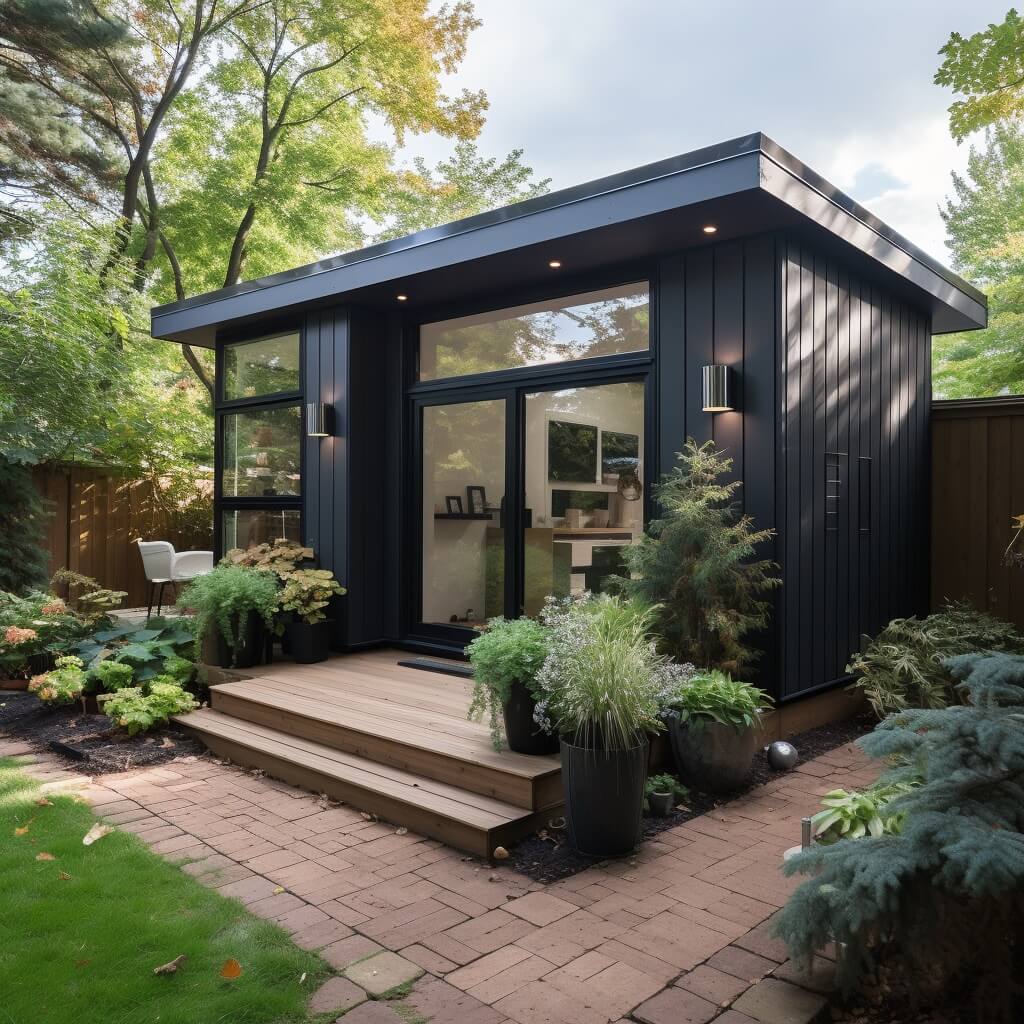
Metal Roofing
Metal roofing is another popular choice for shed roofs, offering durability, long lifespan, low maintenance, and a quick installation process. Metal shingles offer a modern twist on traditional roofing materials like corrugated or asphalt.
It’s an ideal way to freshen up your home with something new and stylish. They are available in various materials, such as steel, aluminum, copper, and zinc, with prices ranging from $150 to $1500 per 100 square feet depending on the material.
One of the main advantages of metal roofing is its energy efficiency, as it can reflect heat from the sun and help maintain a cool temperature inside the shed during summer. The minimum recommended roof pitch used for regular, crimped metal shingles is 3/12, per industry standards. If you’re looking for a durable and energy-efficient option for your shed’s roof, metal roofing could be an excellent choice.
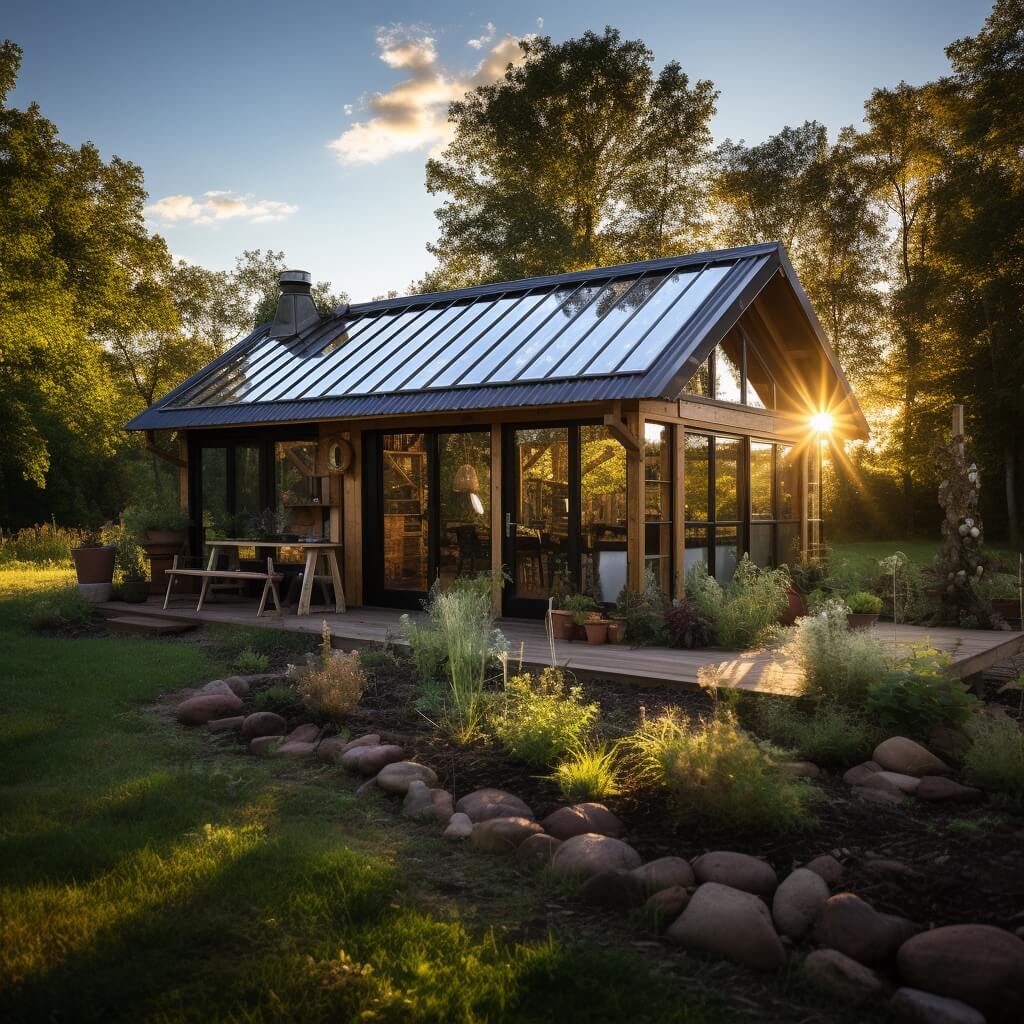
Cedar Shingles
Cedar shingles are crafted from cedar trees and are known for their natural insulating properties and energy efficiency. They can last up to 24 years if stained and cleaned regularly or 15 years if left untreated. However, cedar shingles require more intricate installation compared to materials like asphalt shingles or roofing panels.
Wood shakes, a thicker and hand-cut alternative to cedar shingles, can last for more than 40 years if treated regularly and around 30 years if left untreated. Wood shakes tend to run around $400 for every 100 square feet of area. This is generally considered to be a cost-effective material for roofing and siding projects.
If you’re looking for a natural and energy-efficient roofing material that complements the aesthetics of your wooden shed, cedar shingles or wood shakes could be the ideal choice.
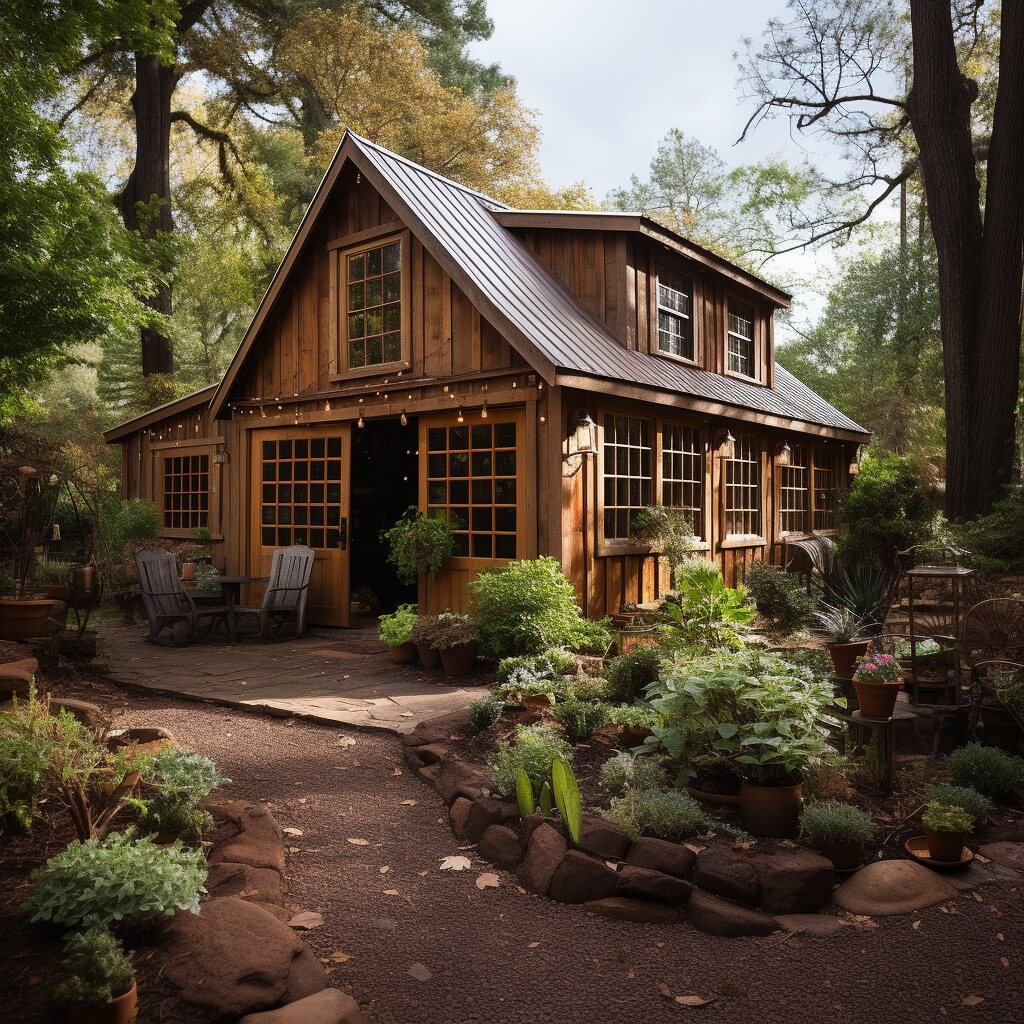
Rubber Shingles
Rubber shingles are constructed from recycled tires and offer a versatile and resilient roofing option. With a minimum recommended pitch of 2/12, rubber shingles can be used on various roof slopes.
Another benefit of rubber shingles is that they are relatively straightforward to install and repair, with an estimated lifespan of 15 to 30 years.
Rubber shingles are approximately $400 per 100 square feet. This cost may vary depending on the type of rubber shingle and where it is being purchased. If you’re looking for an eco-friendly, durable, and flexible roofing material, rubber shingles might be the perfect choice for your shed roof.
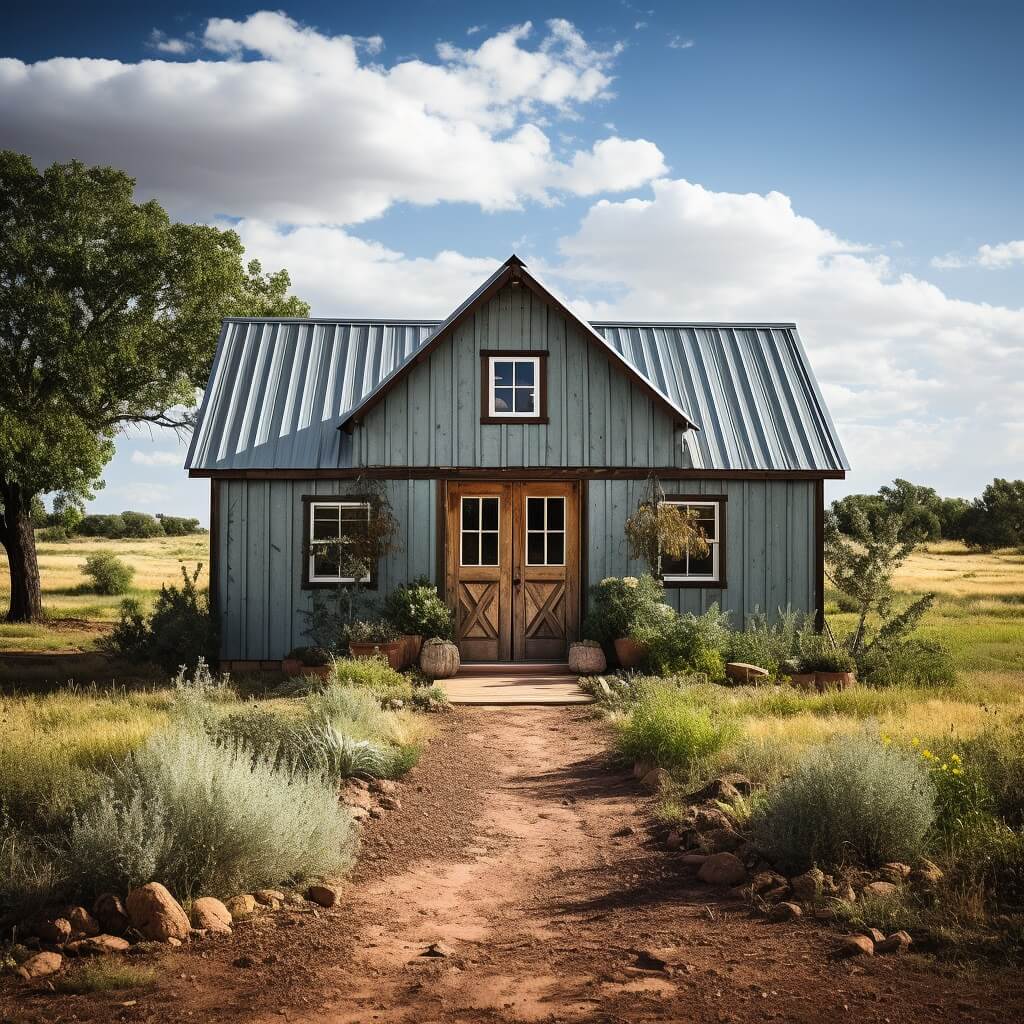
Corrugated Roofing Panels
Corrugated roofing panels, made from metal, fiberglass, or plastic, are a cost-effective and easy-to-install option for sheds. These panels have deep troughs that facilitate drainage and ensure water does not sit on the roof.
The minimum pitch required for a metal roof using raised seam corrugated metal roofing sheets is 0.5/12, making them suitable for flat roofs as well.
Corrugated roofing panels are known for their durability, low maintenance requirements, and quick installation process. If you’re looking for a budget-friendly, low-maintenance, and easy-to-install roofing material, corrugated roofing panels might be the right choice for your shed.
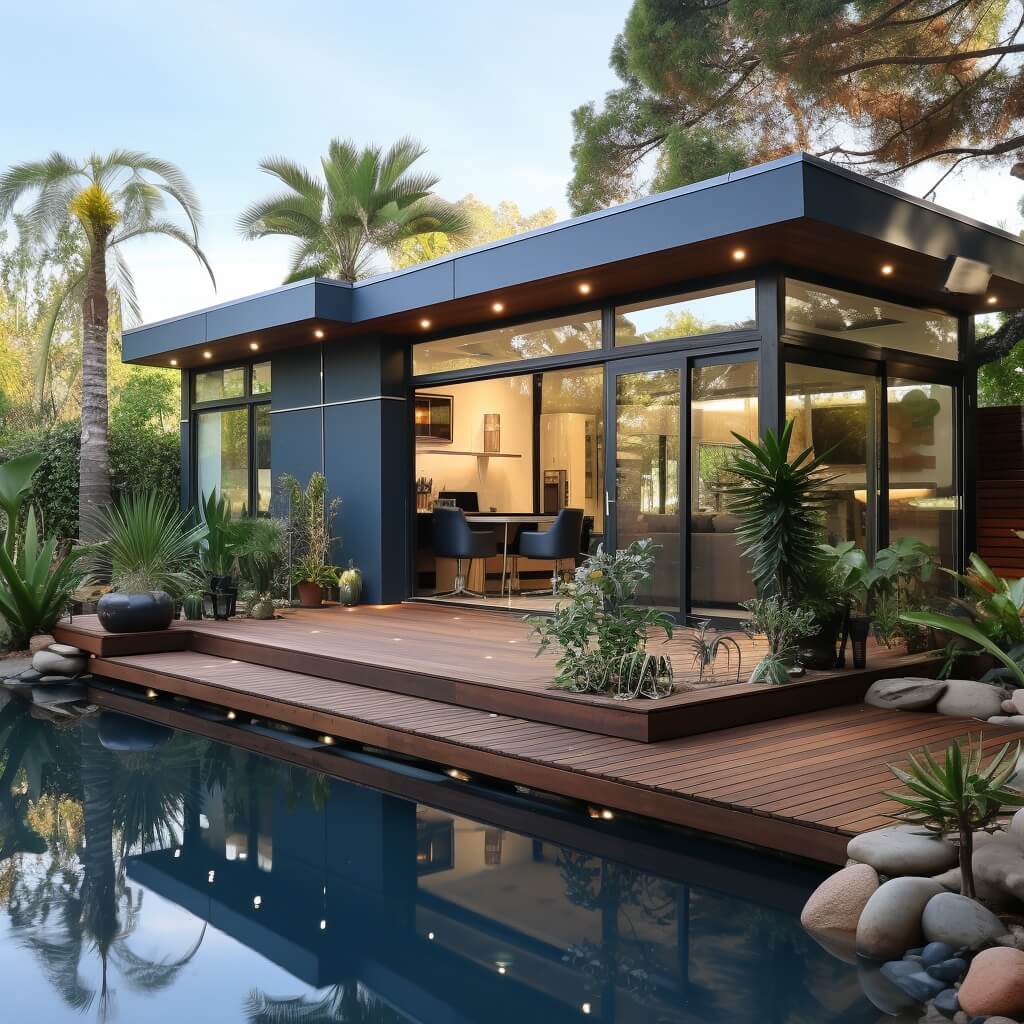
Polycarbonate Roofing Panels
Polycarbonate roofing panels are a lightweight, durable, and UV-protected roofing material, ideal for structures like sheds, garages, and greenhouses. With correct installation, they can last up to 20 years.
Polycarbonate panels offer good insulation from heat and sound, but they are not scratch-resistant.
If you’re looking for a durable and energy-efficient roofing material that provides insulation and protection from the elements, polycarbonate roofing panels could be a great option for your shed.
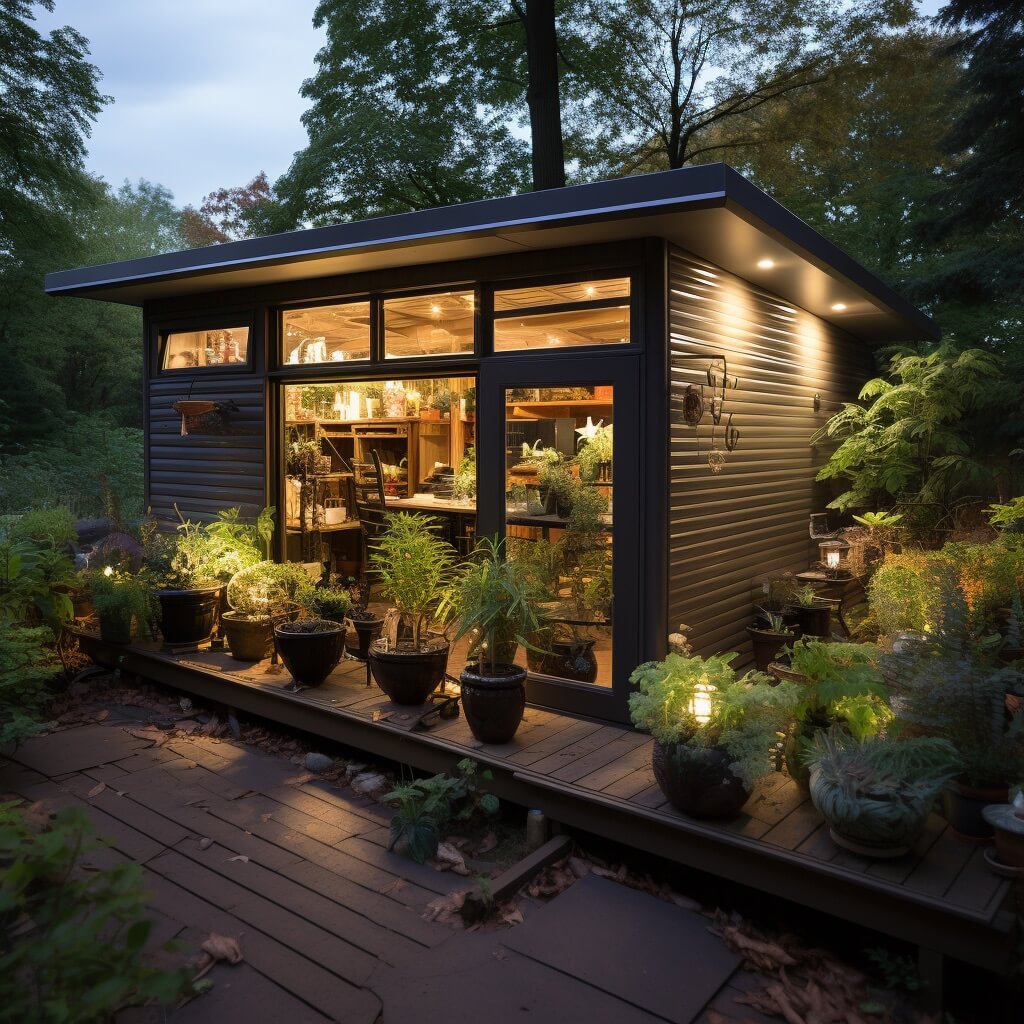
EPDM Rubber Roofing Membrane
EPDM rubber roofing membrane is a pre-cut roofing material that provides a waterproof and durable roofing solution used for garden tool sheds. Thinner material may last up to 12-15 years.
On the other hand, a thicker membrane can maximize its longevity and remain functional for up to 25 years or more. The estimated cost for covering 100 square feet of EPDM roofing is approximately $80.
EPDM roofing is suitable for flat roofs and requires regular inspections and patching of any holes to ensure longevity. If you’re looking for a waterproof and durable roofing material for your shed’s flat roof, EPDM rubber roofing membrane could be the right choice.
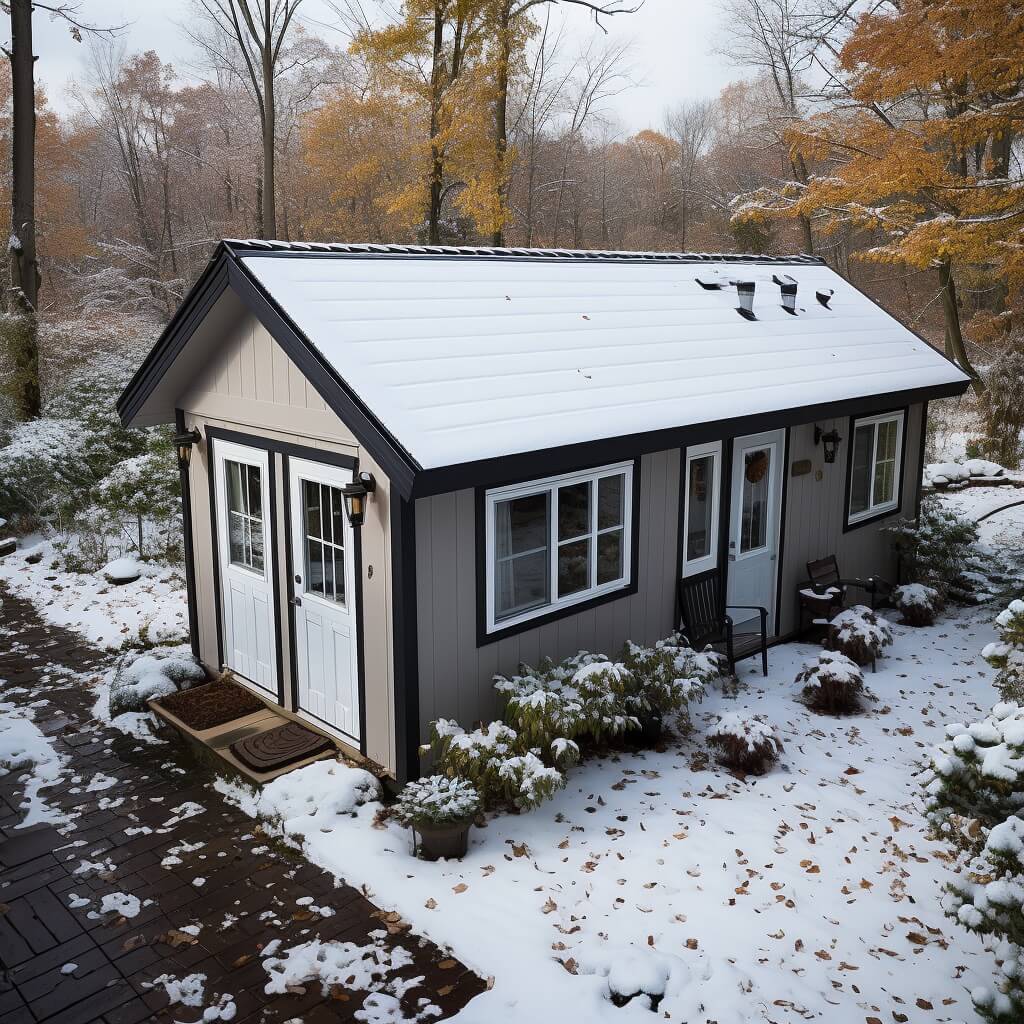
Clay Tiles
Clay tiles are a robust and long-lasting roofing material, with the potential to last up to 100 years when installed correctly and maintained appropriately. They are available in various colors, with terra cotta being the most common.
Clay tiles require a minimum pitch of approximately 35 degrees to ensure proper water runoff. If the pitch is too shallow, water can seep under the tiles, leading to leaks or water damage. The 35-degree angle allows rainwater to flow off the roof efficiently, preventing pooling and potential damage.
The cost of clay tiles ranges from $400 to over $1000 per 100 square feet, depending on the type of tiles selected. If you’re looking for a durable and aesthetically pleasing roofing material that can withstand the test of time, clay tiles might be an excellent choice for your shed.
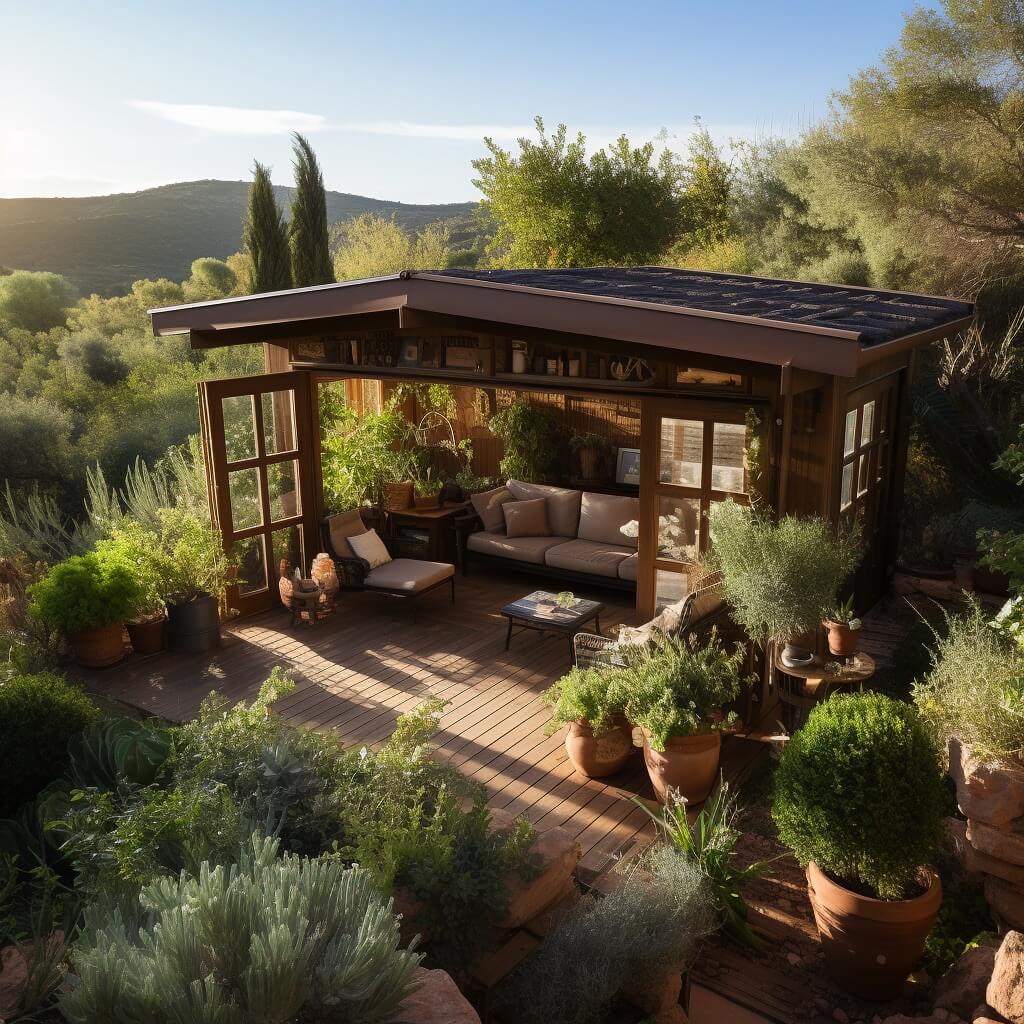
Slate Roofing
Slate roofing is a natural stone roofing material renowned for its durability, waterproofing, and insect-proofing qualities, with a lifespan of up to two centuries. It is a natural insulator and helps regulate the temperature inside the shed during different seasons.
Slate roofing is expensive due to the high cost of the material itself and the specialized skills needed for its installation. Its installation process is complex because each slate tile must be individually cut and installed, requiring a high level of craftsmanship.
Although slate roofing may not be the most budget-friendly option, its impressive longevity and unique aesthetic make it a popular choice for both historic properties and residential dwellings. If you’re looking for a premium roofing material with unmatched durability and a timeless look, slate roofing could be the ideal roof style choice for your shed.
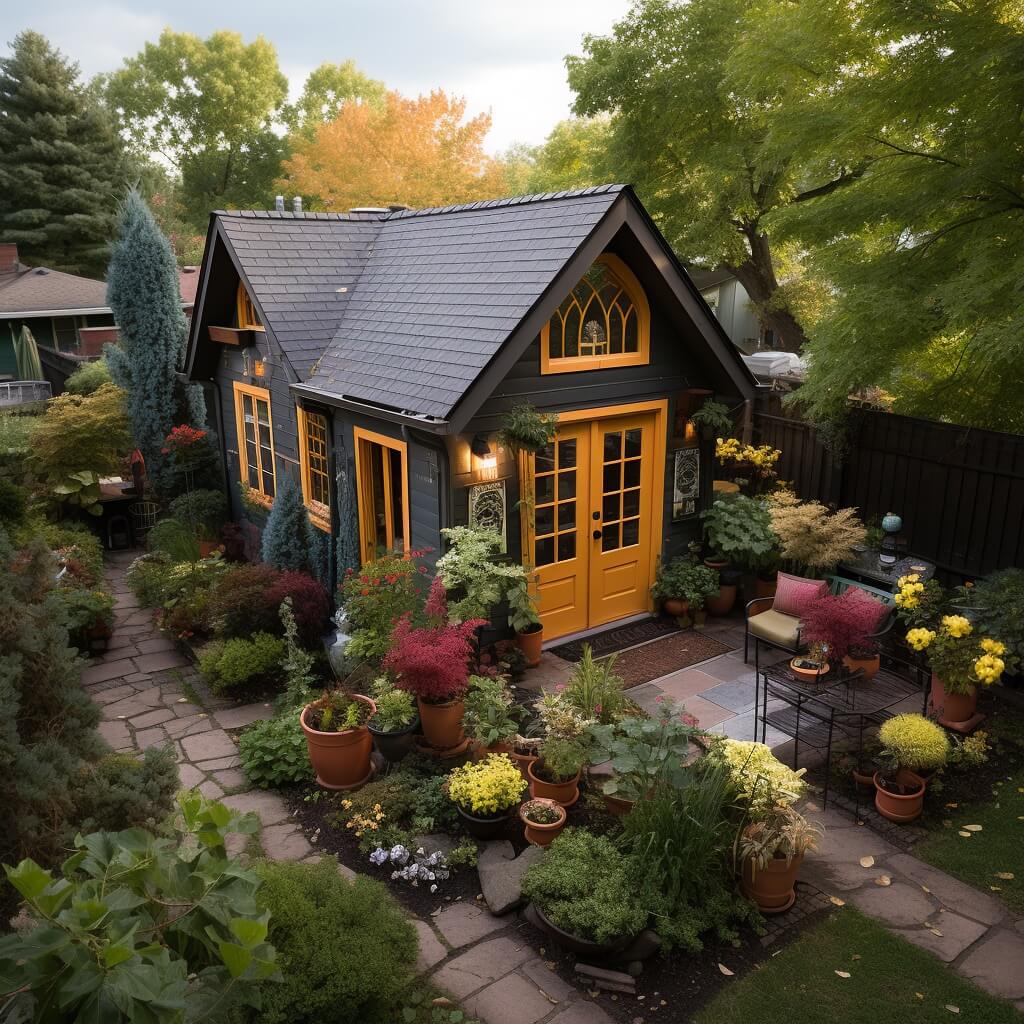
Factors to Keep in Mind When Choosing Shed Roofing Materials
Selecting the right shed roofing material involves considering factors such as climate, the purpose of the shed, budget, and installation complexity. The climate will impact the durability and longevity of the roofing material, while the purpose of the shed will determine the required insulation and ventilation properties.
Budget constraints may limit your options or influence your decision, and the roof slope and installation complexity will affect the overall project timeline and labor costs. Keeping these factors in mind will help you choose the most suitable roofing material for your wooden shed.
Climate
The climate in your region plays a crucial role in determining the most suitable shed roofing material. For warmer climates, rubber roofing is the most appropriate option, as it reflects heat and helps maintain a comfortable temperature inside the shed.
In areas with heavy precipitation, a roof with a higher pitch is generally expected to have a longer lifespan than a flatter roof. Consider the weather conditions in your area, such as rainfall, snow, wind, and temperature fluctuations, when selecting a shed roofing material.
Some materials may require additional maintenance or reinforcements to withstand specific weather conditions, while others may be ideal for your climate without any modifications.
Purpose of the Shed
The intended use of your shed plays a significant role in determining the most appropriate roofing material. If your shed will be used as a workshop, insulation and the temperature regulation properties of the roofing material become more important.
On the other hand, if the shed will be used primarily for storage, durability and maintenance requirements of the roofing material might be of higher priority. Consider the primary purpose of your shed and select a roofing material that best suits its intended function.
Budget
Budget constraints can significantly impact your choice of shed roofing material. The cost to build a shed roof will depend on the materials, which will vary widely, with options ranging from $1 to $5 per square foot, depending on the type of material.
It is essential to find a balance between affordability and durability to ensure you get the most value for your investment. Keep your budget in mind when selecting a shed roofing material and consider the long-term maintenance costs associated with your choice.
Installation Complexity
The installation complexity of shed roofing materials can vary depending on the type of material employed. For example, cedar shingles may be more complex to install compared to materials like asphalt shingles or roofing panels. The installation complexity can affect the overall project timeline and labor costs.
Consider your skill level, available tools, and the amount of time you are willing to invest in the project when selecting a shed roofing material. If you are not confident in your ability to install a particular material, it might be worth considering a professional installer to ensure the longevity and durability of your shed roof.
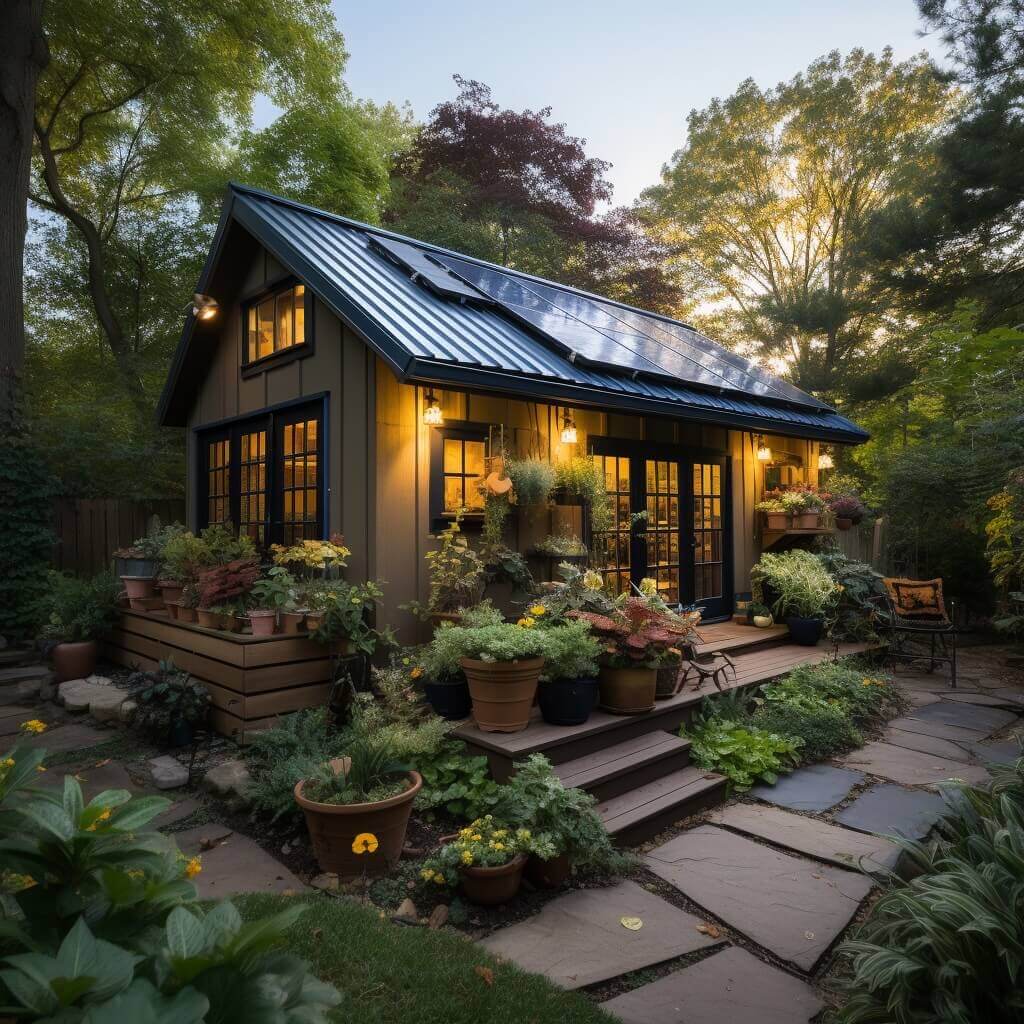
Tips for Proper Shed Roof Installation and Maintenance
To ensure the longevity and durability of your shed roof, it is essential to follow proper installation and maintenance practices. This includes preparing the surface, adhering to manufacturer instructions, and conducting regular inspections and maintenance. The longevity of your shed roof heavily depends on the quality of the installation and the attention given to its upkeep.
In this section, we will discuss the crucial steps for proper shed roof installation and maintenance, including surface preparation, following manufacturer instructions, and regular inspections and maintenance. By following these tips, you can maximize the lifespan of your shed roof and protect your investment.
Preparing the Surface
Before installing any shed roofing material, it is essential to clean and repair the surface. This involves inspecting the surface for any damage, clearing away any debris, and filling in any cracks or holes.
If you are installing an underlayment, make sure it is properly secured before proceeding with the installation of the roofing material. A drip edge, a metal strip installed along the edge of the roof, is also essential to direct water away from the fascia and prevent water from seeping into the roofing material.
Proper surface preparation ensures a solid foundation for your shed roofing material and aids in preventing any potential issues, such as leaks or damage, down the line. Taking the time to prepare the surface correctly will contribute to the overall longevity and durability of your shed roofing system.
Following Manufacturer Instructions
Adhering to the manufacturer’s instructions during the installation of shed roofing materials is crucial for ensuring the durability and longevity of your roof.
These instructions may include installing drip caps along the bottom edges of the roof, nailing full sheets of roof decking, and using roofing felt paper and a drip edge. Make sure to follow all safety precautions and guidelines provided by the manufacturer to avoid any installation errors or accidents.
Regular Inspections and Maintenance
Regular inspections and maintenance are vital for prolonging the lifespan of your shed roof. This includes checking for any damage or deterioration, such as loose or impaired shingles, and addressing any issues promptly.
It is also essential to inspect the roof after severe weather conditions to identify any potential damage caused by storms, heavy rain, or snow. By conducting regular inspections and maintaining your shed roof, you can ensure its longevity and protect your investment.
Shed Roofing Materials FAQ.
What is the best material to use for a shed roof?
From my personal experience, a saw-tooth roof tops the list when it comes to shed roofing materials. Its strength and ability to keep water at bay are unmatched. Plus, it lets the sunshine in, which is a bonus for any garden shed.
Key Materials:
- Saw-Tooth Roof: This is my go-to choice for shed roofs. It’s tough, waterproof, and brightens up the interior with natural light.
- Felt: A tried-and-true option for garden shed roofs, felt offers dependable waterproofing and longevity.
- Bitumen Products: Both bitumen roof sheets and shingles are durable, waterproof, and require minimal upkeep.
- Plastic Lightweight Roof Tiles: These are a great choice if you’re after something light yet sturdy. They’re also a breeze to install.
- Wood Shingles: If you’re after a rustic look, wood shingles won’t disappoint. They blend aesthetics with functionality, offering a unique look without compromising on protection.
In the end, the best material for your shed roof depends on your individual needs and tastes. Whether it’s a saw-tooth roof, felt, bitumen, plastic tiles, or wood shingles, you’re bound to find a solution that works for you.
What is the easiest roofing for a shed?
Speaking from my own DIY experiences, rolled roofing takes the cake when it comes to ease of installation for shed roofs. It’s a breeze to roll out and secure over large areas, saving you both time and effort.
Why Choose Rolled Roofing?
- Ease of Installation: Rolled roofing can be unrolled and nailed down quickly, making it a great choice for DIYers.
- Cost-Effective: It’s thinner and less expensive than asphalt shingles, making it a budget-friendly option.
- Practicality Over Aesthetics: While it may not win any beauty contests or boost your property’s resale value, it gets the job done.
If you’re after a roofing material that’s easy to install and won’t break the bank, rolled roofing is a solid choice. Just bear in mind that it’s more about practicality than aesthetics.
What is the best roof for a wood shed?
A: As someone who’s spent a fair share of time working on wood sheds, I can confidently say that asphalt shingles are a top-notch choice for roofing. They’re designed to endure the elements, providing a sturdy shield against both scorching sun and pouring rain.
Roofing Options for Wood Sheds
| Roofing Material | Features | Benefits |
|---|---|---|
| Asphalt Shingles | Durable, weather-resistant, long-lasting | Reliable protection against heat and rain, stability, durability |
| Metal Roofing | Durable, fire-resistant, recyclable | Long lifespan, fire safety, eco-friendly |
| Wood Shingles | Natural look, insulating properties | Aesthetically pleasing, energy-efficient |
| Clay Tiles | Long-lasting, fire-resistant, low maintenance | Long lifespan, fire safety, minimal upkeep |
| Slate Tiles | Durable, fire-resistant, eco-friendly | Long lifespan, fire safety, recyclable |
To wrap it up, while asphalt shingles are my top recommendation for a wood shed roof, there are other options like metal roofing, wood shingles, clay tiles, and slate tiles that also have their own unique features and benefits. The best choice will depend on your specific needs and preferences.
What is the cheapest way to cover a shed roof?
I’m always on the lookout for cost-effective solutions. When it comes to covering a shed roof, roll roofing is your best bet. It’s not only affordable but also durable and easy to install.
Three Cheapest Ways to Cover a Shed Roof
- Roll Roofing
- Use Case: Ideal for DIYers due to its easy installation process.
- Features: Thin, covers large areas quickly.
- Benefits: Affordable, durable, and easy to install.
- Asphalt Shingles
- Use Case: Suitable for those seeking a balance between cost and durability.
- Features: Weather-resistant, available in various colors.
- Benefits: Economical, offers good protection against the elements.
- Corrugated Metal
- Use Case: Perfect for those who want a long-lasting yet affordable solution.
- Features: Durable, fire-resistant, and recyclable.
- Benefits: Low maintenance, long lifespan, and eco-friendly.
While roll roofing is the most affordable option, asphalt shingles and corrugated metal also offer cost-effective solutions for covering a shed roof. The best option for you will depend on your specific needs and budget.
What is the best roof to put on a shed?
I’ve found that the choice of roofing material can make a significant difference in the longevity and durability of a shed. Asphalt shingles, metal, plastic polycarbonate, thermoplastic (PVC), and fiber cement shingles are all excellent choices.
Top Roofing Options for Sheds
| Roofing Material | Use Case | Features | Benefits |
|---|---|---|---|
| Asphalt Shingles | Ideal for a balance of cost and durability | Weather-resistant, various colors | Economical, good protection against elements |
| Metal | Perfect for long-lasting, low-maintenance roofing | Durable, fire-resistant, recyclable | Long lifespan, fire safety, eco-friendly |
| Plastic Polycarbonate | Great for letting in natural light | Durable, transparent | Long-lasting, allows natural light into the shed |
| Thermoplastic (PVC) | Suitable for a waterproof, lightweight solution | Waterproof, lightweight, durable | Easy to install, long lifespan, excellent waterproofing |
| Fiber Cement Shingles | Ideal for a rustic, durable roof | Durable, aesthetically pleasing | Long lifespan, adds a rustic charm to the shed |
The best roof for your shed will depend on your specific needs and preferences. Whether it’s asphalt shingles, metal, plastic polycarbonate, thermoplastic (PVC), or fiber cement shingles, each option offers unique features and benefits that can enhance the functionality and aesthetics of your shed.
In Conclusion
In summary, the top shed roofing materials to consider for your wooden shed are asphalt shingles, metal roofing, cedar shingles, rubber shingles, corrugated roofing panels, polycarbonate roofing panels, EPDM rubber roofing membrane, clay tiles, and slate roofing.
When selecting a shed roofing material for your garden or home office shed, consider factors such as climate, purpose of the shed, budget, and installation complexity.
Proper installation and maintenance of your shed roof are crucial for ensuring its longevity, so make sure to prepare the surface, follow manufacturer instructions, and regularly inspect and maintain your shed roof covering well. By making an informed decision and following these tips, you can enjoy a durable and functional shed roof for years to come.

